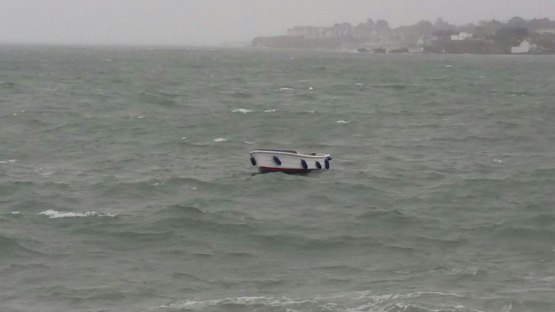Two people were rescued by RNLI lifeboats on Dublin Bay last night in near gale conditions. The rescue at Dun Laoghaire last night happened after the boat they were on became snagged on lobster pots 50 metres from the East Pier. The National Yacht Club reported its launch missing from the East Pier last night around the same time.
The incident occurred around 10.30pm when they called for help by mobile phone. The Irish Coast Guard Marine Rescue Co-Ordination Centre (MRCC Dublin) requested that the RNLI Inshore lifeboat (ILB) launch followed by the All-Weather lifeboat. The Dun Laoghaire Coast Guard Unit carried out searches along the shoreline at the East Pier where a heavy swell was building. Conditions were South-South East Force 6-7 (Near Gale force) with wind against tide sea state building.
The 20-foot motor launch had become snagged in lobster pots on the Scotsman’s Bay side of the East Pier. The three-man ILB crew transferred the two casualties to the larger lifeboat that brought them to shore where the Coast Guard unit was waiting. Both were unhurt in the incident.
The lifeboats then brought an anchor and tackle out to the vessel in an attempt to keep it in position until today’s forecast gale abates.
“This was a happy ending for what could easily have become a tragedy on a dark and windy night,” commented Robert Fowler, Deputy Launching Authority (DLA) at RNLI Dun Laoghaire. “Our volunteer crew launched within eight minutes of the alert and were with the casualties very quickly in spite of the sea conditions. The role of the RNLI is purely life-saving and the close co-operation with our Irish Coast Guard colleagues meant that two people were in safe hands within 20 minutes of their distress call.”
The motor launch is still at anchor close to the East Pier this afternoon but it could be Tuesday morning before attempts can be made to safely recover it.
Read our UPDATE to this story here
































































